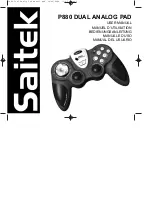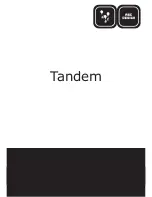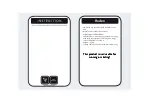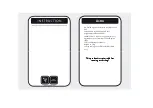
25
For setups requiring very low chopping frequencies and high stability the 60/2-
slot wheel may be used. There is no wheel setting for this particular wheel on
the front panel
—
the 60-slot wheel setting must be selected. The actual chopping
frequency will differ from that displayed on the front panel by a factor of 2/60 =
1/30. For example, in
NORMAL
mode with the internal synthesizer set to 120 Hz
and with the 60-slot wheel setting selected, the actual chopping frequency
through the 2-slot segment of the wheel will be (1/30)·120 = 4 Hz.
Sync Button
The user may synchronize the chopping frequency to the Chopper's internal
synthesizer (INT), the rising edge (
EXT+
) or falling edge (
EXT-
) of an externally-
supplied signal on
Sync In
.
The motor’s rotational speed may be controlled
directly by applying a negative voltage to the
V
ext
input.
When
INT
is selected, the signals available on the
OUT 1
and
OUT 2
outputs (see
the following section on the
Mode
button) on the back panel are phase-locked to
the internal synthesizer. When using the
INT
setting, a signal applied to
Sync In
has no effect on the device’s operation.
When an external signal is used, either with
EXT+
or
EXT-
, the signals available
on the
OUT 1
and
OUT 2
outputs are instead phase-locked to the external signal.
In
EXT+
and
EXT-
modes the output from
Synth Out
(described below) is not
locked to, and does not have the same frequency as, the external signal and
remains at the frequency setpoint set on the front panel.
When
V
ext
is selected, the user may drive the motor directly with an analog
voltage (-10 V to 0 V) applied at
V
ext
on the back panel. When using
V
ext
or
INT,
a
signal applied to the
Sync In
input has no effect on the Chopper. In this setting,
the signals available on
OUT 1
and
OUT 2
are frequency- and phase-locked to the
chopping frequency measured using the photo-interrupt on the Chopper Head,
F
outer
. Note that these signals will therefore only be as stable as the externally-
controlled chopping frequency.
To change the
Sync
source, press the
Sync
button until the LED under the
desired
Sync
source lights.
Mode Button
The
Mode
button allows the User to change the frequency that F
outer
will lock to
in addition to the reference signals available at
OUT 1
and
OUT 2
(rear panel).
The table below gives the locking frequency of F
outer
and the reference signals
available at
OUT 1
and
OUT 2
, for each
Mode
setting.
In the table, the following definitions are used:
x
F
sync
: frequency of the
Sync
source
x
F
outer
: chopping frequency of outer slots as measured by IR sensor
x
F
inner
: chopping frequency of the inner slots; for single-slot wheels F
outer
is the chopping frequency, and F
inner
is undefined.
















































